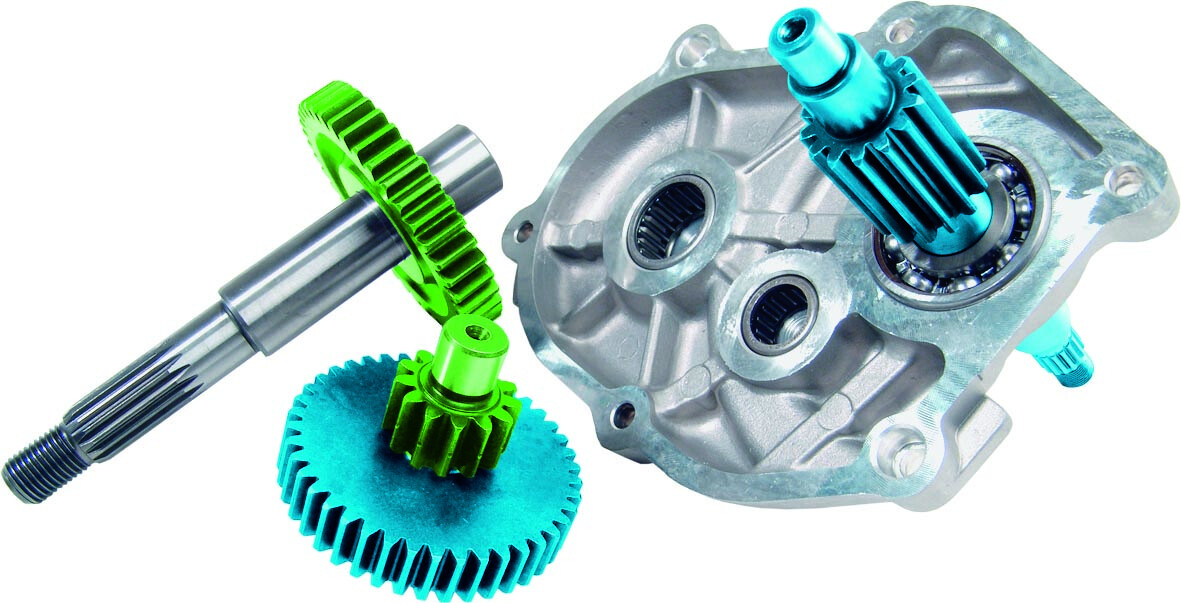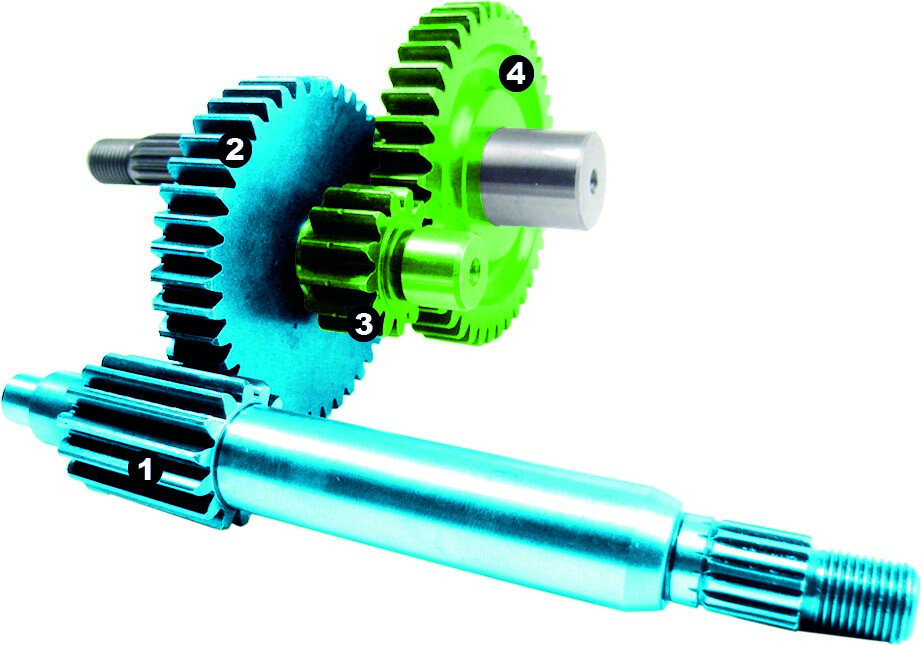
Scooter Gearbox
First of all we want to explain the components and function of the gearbox and get into what is important when choosing a new gear ratio that differs from the original. It is by no means true that a longer gearbox automatically means that the scooter runs faster or gets over the top torque.
The gears are located in a closed gearbox filled with oil to lubricate the gears and bearings; it sits in the rear part of the engine case and is hidden by the gearbox cover. For any work on the gears, drain the transmission oil first (oil drain bolt behind the wheel, on the underside of the crankcase), remove the complete torque drive and take off the gearbox cover.

The job of a transmission or gearbox is to reduce the speed of the rear pulley to the rear wheel. First, the CVT takes care of converting the transmission ratio. When the variator has reached its maximum ratio (the V-belt has moved all the way out), the torque drive turns about five times as often as the crankshaft (that’s 50,000 rpm for an engine speed of 10,000 rpm). Assuming the wheel had a direct connection to the torque drive shaft, the wheel would now spin five times per ignition (and thus per crankshaft revolution). This would give us an extremely long transmission ratio, which probably no engine would be able to handle. Keep that in mind to understand the basic function of a gearbox. The gearbox consists of a PRIMARY (gear 1+2 marked blue) and SECONDARY (gear 3+4 marked green) transmission. It does not really matter if you chenge primary or secondary transmission to alter the final gear ratio. On high-end racing enginesit is pretty common to change both gears.
What is the transmission gear ratio?
Both primary or secondary transmission consists of a pair of gears, a smaller and a larger gear. If you divide the number of teeth on the large gear by the number of teeth on the small gear, you get the gear ratio. For example: MBK Booster secondary transmission 12/44 will give you to a 1:3.66 gear ratio (large gear divided by small gear).
Why would you even want a taller gear ratio?
For one thing, the engine does not have to rev up as high as before, thus increasing durability. If the engine generates enough torque at a given rpm, taller gearing will also result in a higher top speed. The engine must, however, have enough power to pull a longer transmission. Extending a transmission on a standard engine is pretty pointless. In a worst case scenario, if the transmission is much too tall, the engine may even run slower than before. Just think of a bicycle: In a higher gear, you would have to work harder to get ahead; goin up a steep mountain in tenth gear is much harder and slower than in fifth gear.
How much should you change gear ratio?
A 70cc sport / midrace cylinder with a 17.5 carburetor has enough power to pull a 12-20% taller gearbox. if you have a racing cylinder, you can even go a bit higher. Please keep in mind that longer gearing will impact off-the-line acceleration, because the vehicle will now have to handle a taller gear ratio right from the get go. To calculate the increase in percent of the transmission ratio you need the ratios of both the standard and the tuning gearbox. For example: the stock secondary transmission of the Aprilia SR50 Netscaper has 14/43 teeth, equaling a ratio of 1:3.07. Top Performances offers a secondary transmission for this engine with 16/41 teeth, giving it a ratio of 1:2.56. If you now divide the ratio of the tuning gearbox by that of the original gearbox, subtract 1 and multiply the whole by -100, you get the percentage of the gear extension. Let's do the math: ((2.56 : 3.07)-1) x (-100) = 16.62 %. This means the smaller the gear ratio, the taller, or longer, the transmission!! For example: 1:4.2 - short transmission, 1:3.15 - medium transmission, 1:2.73 - tall transmission, 1:2.11 extra tall transmission.
Straight or helical teeth?
Most tuning gears have straight teeth. The advantage of straight teeth is that due to less side load on the bearings transmission of power is improved and due to a smaller friction surface less heat is generated. the drawback is that they are noisier than gears with helical teeth.